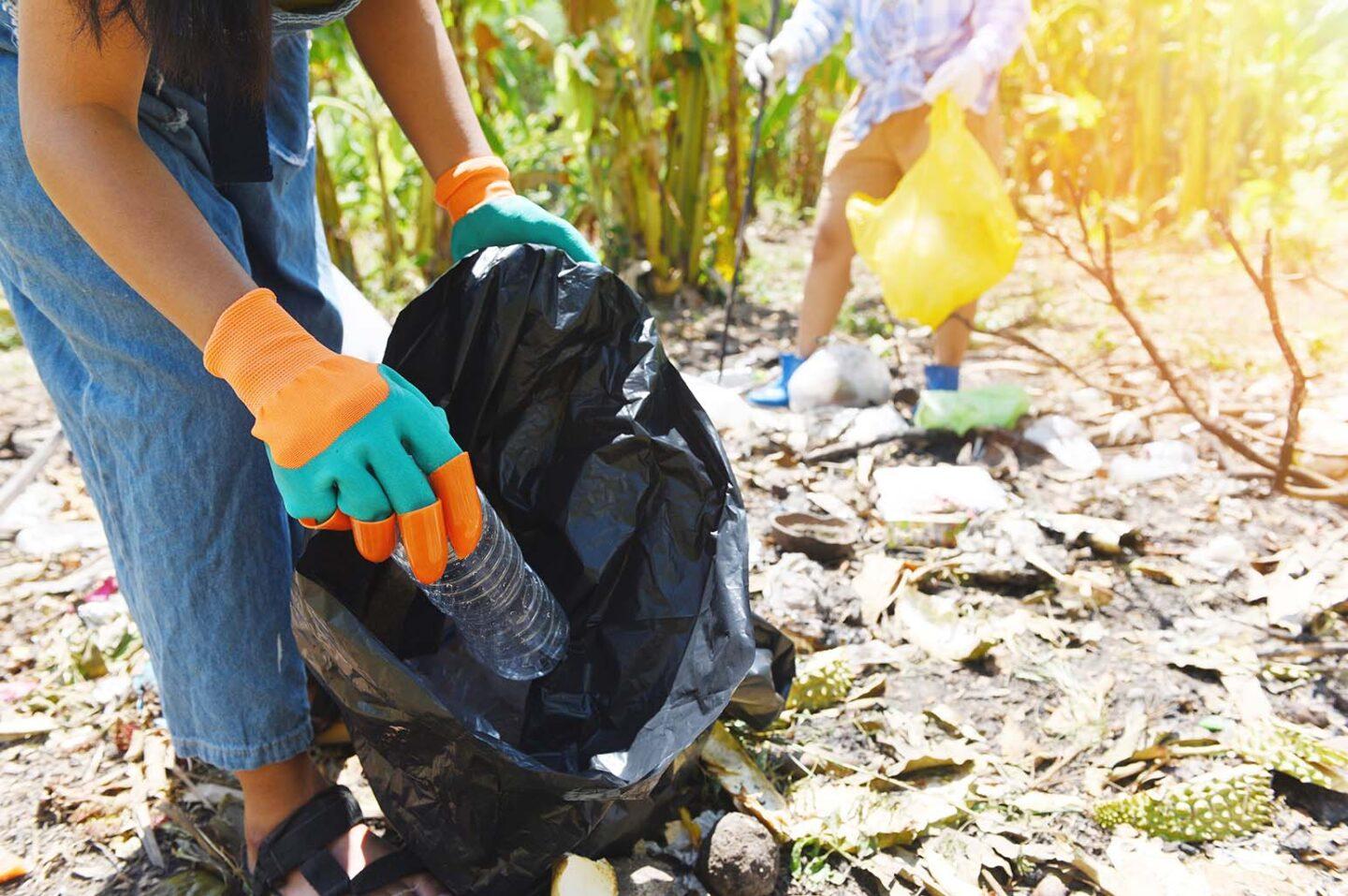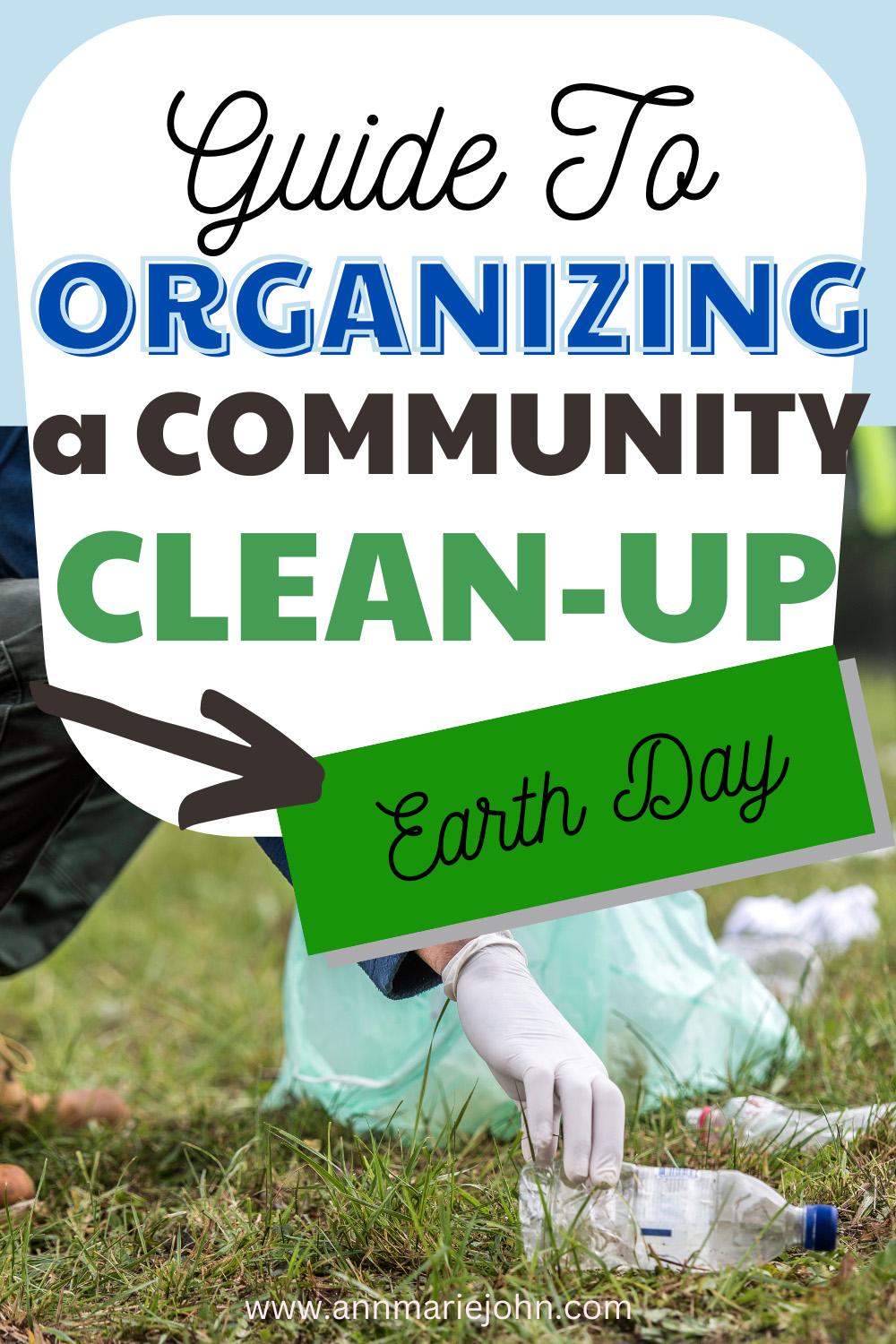Want to make a positive impact on the environment? Get motivated and organized with this guide on how to organize a successful community clean-up.

To protect our planet from the ever-growing threat of climate change and environmental degradation, communities must urgently unite, roll their sleeves up, and commit to becoming part of the solution. On Earth Day, the significance of environmental conservation benefits from a much-needed spotlight, inspiring people to step up and make a constructive difference. There are many ways to get involved, and organizing a community clean-up is a standout option for making a difference this Earth Day.
The Terrible Ten
It’s no secret that our precious planet is in crisis, with the top ten product pollutants outlined by FairPlanet being:
- Cigarettes
- Food containers/wrappers
- Beverage/plastic bottles
- Plastic bags
- Cap/lids
- Straws/stirrers
- Cups, plates, knives, forks and spoons
- Beverage cans
- Paper bags
- Glass bottles
By committing to using sustainable practices and materials, many businesses are now leading the way toward a greener future. As people become more mindful about how their shopping habits impact the planet, the demand for environmentally-friendly goods is growing.
According to Harvard University’s Sustainability Reports, in excess of 17 million oil barrels are required to produce the number of plastic bottles that Americans use every single year.
Thankfully, a growing number of businesses that sell bottled products are now adhering to strict sustainability principles, such as utilizing plant-based (completely recyclable) materials over plastics. One example is JUST Water, whose sustainably packaged and ethically sourced boxed water has been a huge success.
Earth Day emphasizes the urgent need for action, and our dedication to protecting the planet drives us. Through our creation of a sustainable substitute for conventional plastic water bottles, we hope to motivate and inspire others to make meaningful changes too.
By prioritizing sustainability, companies can both protect the environment and attract environmentally-conscious consumers; wherever possible, we should ‘vote with our feet’ and opt for these greener consumer alternatives. When planning a clean-up, factor in the sustainability of any supplies needed.
Without further ado, here’s a guide to organizing a community clean-up this Earth Day.

Step 1: Scope It Out
Before anyone gets their mitts grubby, you need to pinpoint the best spot to tackle. Explore areas within your community and identify those that most need attention; waterways and parks are usually high on the list. Contacting local authorities, such as city or town officials, is another good way to get hold of a list of locations in need of some TLC. Obtaining official clearance is also key to running a hassle-free cleanup.
The selection process for a cleanup site should involve assessing various aspects, such as its overall size, the volume of litter or trash that needs disposal, and any other logistical factors that may impede the task. Furthermore, evaluate just how doable clearing everything away is going to be – some areas will inevitably need more volunteers or specialized gear.
Step 2: Rally the Troops
Once you’ve set your sights on the perfect spot, it’s time to start recruiting volunteers. To foster greater community participation, you could consider approaching local schools, groups, and businesses with a friendly invitation; you can also draw in additional helpers by sharing and advertising information about the clean-up through social media channels and news outlets.
Effective communication is crucial to managing volunteers, so be sure to clearly relay information and updates related to dates, times, and locations for clean-up activity. Encourage volunteers to invite their friends, family, and colleagues to get involved, and consider using a sign-up sheet or online form to help keep track of your trash-busting team.
Step 3: The Nitty Gritty
As well as building a wonder-team of volunteers, it’s essential to do some pre-planning for the clean-up. Lock in a suitable date and time for the event, and identify any essential equipment and supplies you will need; gloves and trash bags are just the basics, while larger tools such as rakes, shovels, and nets may also be helpful in removing larger debris, such as from a beach or waterway. This is where assessing the topography of the area and the type of trash lurking there will come into play. It’s also a good idea to check in with the local government or waste management companies to see if they are willing to donate any useful supplies.
Also, safety first! Consider your location in relation to any medical emergencies, have a first-aid kit onsite, and preferably have someone trained in CPR. Additionally, consider how the team will remain fed and watered; fuel them up for a great result – just don’t give them food and drinks in plastic wrapping or other pollutants!
Step 4: Roll Up Your Sleeves
The first mission on clean-up day is to gather everyone into a group and head towards the target location without losing anyone along the way! Be sure to arrive at the meeting point nice and early and well-prepared. Assigning individuals to specific spots and communicating how to execute the tasks clearly will go a long way toward guaranteeing a smooth operation; put the dots close together, such as who is responsible for picking up trash, sorting through the recyclables, etc.
In order for your volunteer team to stay alert during their shift, make sure they have regular intervals for rest plus opportunities for hydration and snacking. Also, consider thanking and recognizing volunteer efforts by organizing a small celebration or gathering once the event is finished.
Step 5: Dealing with the Dirt
Disposing of waste in the right way is, of course, essential to completing the task successfully. Ensure that garbage and recycling materials are handled correctly – in some cases, local authorities are willing to facilitate disposal efforts by providing dumpsters and/or other equipment.
The Ripple Effect
Organizing your own neighborhood or town cleanup requires careful planning, but the rewards are well worth the effort. As well as doing your bit toward helping the planet and your local area, encouraging others to participate gives people the chance to unite with other locals, promote consciousness regarding environmental issues, and motivate individuals to minimize their ecological impact in daily life.
